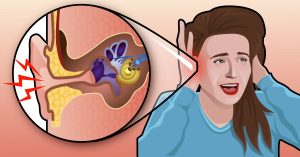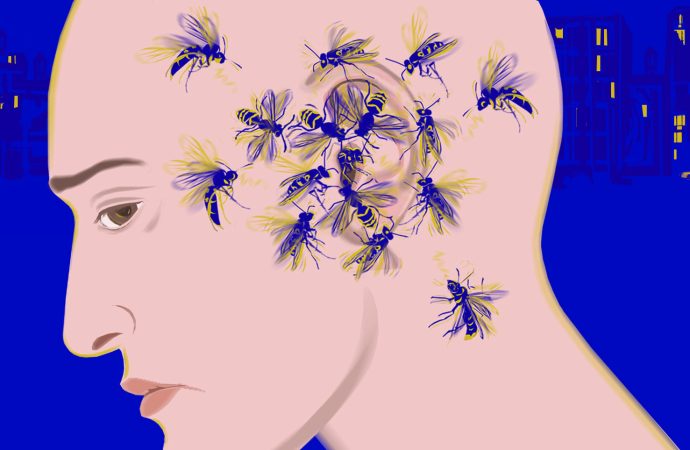Introduction Handle Hearing Loss is a vital sense that enhances our communication and connection with the world. However, as we age, hearing loss, or presbycusis, becomes a common occurrence. This comprehensive guide aims to shed light on the causes, symptoms, and preventative measures for age-related hearing loss, offering valuable insights for maintaining healthy hearing. Overview
Introduction
Handle Hearing Loss is a vital sense that enhances our communication and connection with the world. However, as we age, hearing loss, or presbycusis, becomes a common occurrence. This comprehensive guide aims to shed light on the causes, symptoms, and preventative measures for age-related hearing loss, offering valuable insights for maintaining healthy hearing.
Overview
Age-related hearing loss, also known as presbycusis, is a prevalent condition, affecting more than 50% of individuals aged 75 and above in the United States. It typically progresses gradually and is characterized by a decline in hearing ability. Presbycusis can manifest in three main types: conductive, sensorineural, and mixed. Conductive hearing loss involves issues with the outer or middle ear, sensorineural loss affects the inner ear, and mixed hearing loss is a combination of both.
Aging and exposure to loud noises are significant contributors to hearing loss. Additionally, factors such as excessive earwax can temporarily impact how well the ears function.
While hearing loss is often irreversible, various strategies can be employed to improve hearing and enhance overall communication abilities.
Parts of the Ear
Understanding the structure of the ear is crucial to grasp how hearing loss occurs. The ear consists of three primary parts: the outer ear, middle ear, and inner ear. Each section plays a distinct role in the process of converting sound waves into signals that are sent to the brain.
- Outer Ear: Collects sound waves.
- Middle Ear: Amplifies and transfers sound vibrations.
- Inner Ear: Converts vibrations into electrical signals for transmission to the brain.
Symptoms
Symptoms of age-related hearing loss may vary and can include:
- Muffling of Speech and Sounds: Difficulty in perceiving clear speech or other sounds.
- Trouble Understanding Words in Noise: Struggling to comprehend words, especially in crowded or noisy environments.
- Difficulty with Alphabet Letters (Non-vowels): Challenges in hearing specific letters, particularly consonants, making speech less intelligible.
- Frequent Requests for Clarification: Often asking others to speak more slowly, clearly, or loudly.
- Increased Volume of Electronic Devices: Needing to turn up the volume on the television or radio.
- Social Avoidance: Avoidance of social settings due to communication challenges.
- Bothered by Background Noise: Sensitivity to and irritation by background noise.
- Ringing in the Ears (Tinnitus): Perception of persistent ringing or buzzing sounds in the ears.
Causes
Understanding how hearing loss occurs involves delving into the inner workings of the ear. The process begins with sound waves passing through the outer ear, causing the eardrum to vibrate. These vibrations are then amplified by three small bones in the middle ear as they travel to the inner ear, specifically the cochlea.
Causes of hearing loss include:
- Damage to the Inner Ear: Aging and exposure to loud noises can lead to wear and tear on the hairs or nerve cells in the cochlea responsible for sending sound signals to the brain.
- Buildup of Earwax: Over time, earwax accumulation can block the ear canal, hindering the passage of sound waves. Earwax removal can help restore hearing.
- Ear Infections, Unusual Bone Growths, or Tumors: Conditions affecting the outer or middle ear can cause hearing loss.
- Ruptured Eardrum (Tympanic Membrane Perforation): Loud noises, sudden pressure changes, or infection can cause the eardrum to burst.

Image by: yendex.com
How Hearing Loss Can Occur
The ear’s intricate process involves sound waves passing through the outer ear, causing vibrations that travel to the inner ear. Inside the cochlea, thousands of tiny hairs attached to nerve cells facilitate the conversion of sound vibrations into electrical signals, which are then transmitted to the brain. Hearing loss can occur when these delicate hairs or nerve cells become damaged or missing, resulting in poor transmission of electrical signals. This often leads to difficulties in hearing higher pitched tones, making it challenging to discern words against background noise.
Risk Factors
Several factors contribute to damage or loss of hairs and nerve cells in the inner ear, including:
- Aging: The inner ear naturally breaks down over time.
- Loud Noise Exposure: Prolonged exposure to loud sounds, whether occupational or recreational, can damage inner ear cells. This damage can occur gradually or suddenly, such as with a short blast of noise, like a gunshot.
- Heredity: Genetic factors may increase susceptibility to ear damage from sound or aging.
- Occupational Noise Exposure: Jobs involving constant loud noise, such as farming, construction, or factory work, can lead to inner ear damage.
- Recreational Noise Exposure: Activities with dangerously high noise levels, including firearms, jet engines, snowmobiling, motorcycling, carpentry, or loud music, can cause immediate and permanent hearing loss.
- Certain Medications: Some medications, such as the antibiotic gentamicin, sildenafil (Viagra), and certain cancer treatments, can damage the inner ear. High doses of aspirin, other pain relievers, antimalarial drugs, or loop diuretics can cause temporary effects on hearing, including tinnitus or hearing loss.
- Illnesses: Conditions like meningitis, causing high fever, can harm the cochlea. Want to Explore More Health Problems With Their Treatments
Loudness of Common Sounds:
| Decibels | Noise Source |
|---|---|
| 30 | Whisper |
| 40 | Refrigerator |
| 60 | Normal Conversation |
| 75 | Dishwasher |
| 85 | Heavy City Traffic, Cafeteria |
| 95 | Motorcycle |
| 100 | Snowmobile |
| 110 | Chainsaw, Rock Concert |
| 115 | Sandblasting |
| 120 | Ambulance Siren, Thunder |
| 140-165 | Firecracker, Firearms |
Maximum Job-Noise Exposure (NIOSH, 2018):
| Sound Level (Decibels) | Duration (Daily) |
|---|---|
| 90 | 8 hours |
| 92 | 6 hours |
| 95 | 4 hours |
| 97 | 3 hours |
| 100 | 2 hours |
| 102 | 1.5 hours |
| 105 | 1 hour |
| 110 | 30 minutes |
| 115 | 15 minutes or less |
Complications
Hearing loss can have profound effects on an individual’s quality of life. Older adults experiencing hearing loss often report feelings of depression, as it can impede communication and lead to social isolation. Moreover, hearing loss is linked to cognitive impairment and an increased risk of falling.
Prevention
Taking proactive measures to prevent hearing loss is crucial. The following steps can help:
- Protect Your Ears: Avoiding prolonged exposure to loud noises is the most effective preventative measure. In occupational settings, consider using plastic earplugs or glycerin-filled earmuffs to protect your hearing.
- Regular Hearing Tests: If you work in a noisy environment, consider scheduling regular hearing tests. Detecting early signs of hearing loss allows for timely intervention to prevent further deterioration.
- Risk Mitigation in Hobbies and Activities: Engaging in activities like riding snowmobiles, using power tools, or attending loud concerts can contribute to hearing loss. Wearing hearing protectors and taking breaks from noise can safeguard your ears. Additionally, reducing the volume when listening to music is a simple yet effective preventive step.
When to See a Doctor
If there is a sudden onset of hearing loss, especially in one ear, seeking immediate medical attention is crucial. For age-related hearing loss, which typically progresses gradually, it is advisable to consult a healthcare provider if hearing difficulties are impacting daily life.

Image by: medical dialogues.in
Conclusion
Presbycusis, or age-related hearing loss, is a prevalent condition that significantly impacts the lives of many individuals, especially as they grow older. Understanding the causes, symptoms, and preventive measures is crucial for maintaining optimal hearing health.
As we explored, the intricate process of hearing involves the outer, middle, and inner ear working in harmony to convert sound waves into electrical signals for the brain. Unfortunately, factors such as aging, exposure to loud noises, and even the buildup of earwax can disrupt this delicate process, leading to hearing loss.
Recognizing the symptoms of hearing loss, from difficulty understanding speech to increased volume requirements and social avoidance, is essential for early intervention. Seeking prompt medical attention, especially for sudden hearing loss, can make a significant difference in managing the condition effectively.
















